The creation of computer systems that are capable of learning, solving problems, and making decisions—tasks that traditionally require human intelligence—is known as artificial intelligence (AI). AI is crucial because it enables the automation of many operations, increasing accuracy and efficiency while lowering the demand for human involvement.
In 2023, both individuals and companies will have access to a wide range of free AI technologies. With the aid of these technologies, people can more easily gain access to AI and use it to improve their efficiency and decision-making skills. The best free AI tools include Apache MXNet, Google Cloud AutoML, H2O.ai, and TensorFlow.
A summary of the best free AI tools that will be accessible in 2023 will be given in these guidelines, along with details on the capabilities they offer. It attempts to help people and organizations in choosing the ideal instruments for their requirements so that everyone can profit from AI. The publication also emphasizes the significance of AI in the modern world along with how it can revolutionize a range of sectors, including production, healthcare, and finance.
Top Free AI Tools for Coding in 2023
TensorFlow
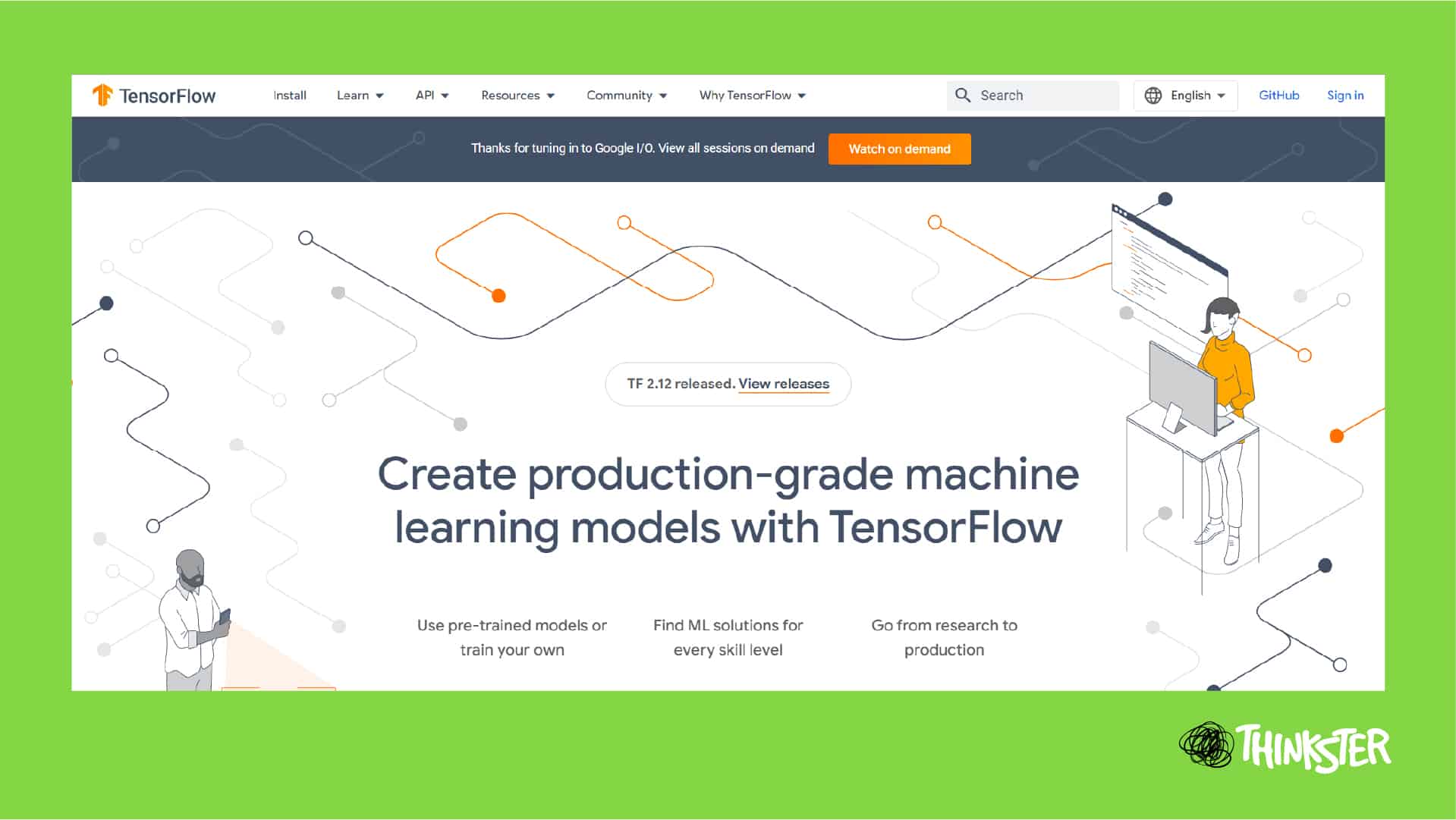
Google initiated an open-source machine learning framework referred to as TensorFlow. It enables programmers to create and implement machine learning models on various kinds of gadgets, including desktops, smartphones, and cloud computing. TensorFlow’s adaptability, scalability, and capacity for managing large quantities of data are among some of its standout characteristics.
TensorFlow offers a high-level API that makes it straightforward to create and train machine learning models, which is only one of its many advantages. Additionally, it has outstanding performance and is especially suited to dealing with huge amounts of data. Moreover, TensorFlow has a significant and active user base that helps programmers raise their abilities and create greater models by offering assistance and assets. TensorFlow is an effective tool for developing and setting up machine learning systems overall.
Scikit-Learn
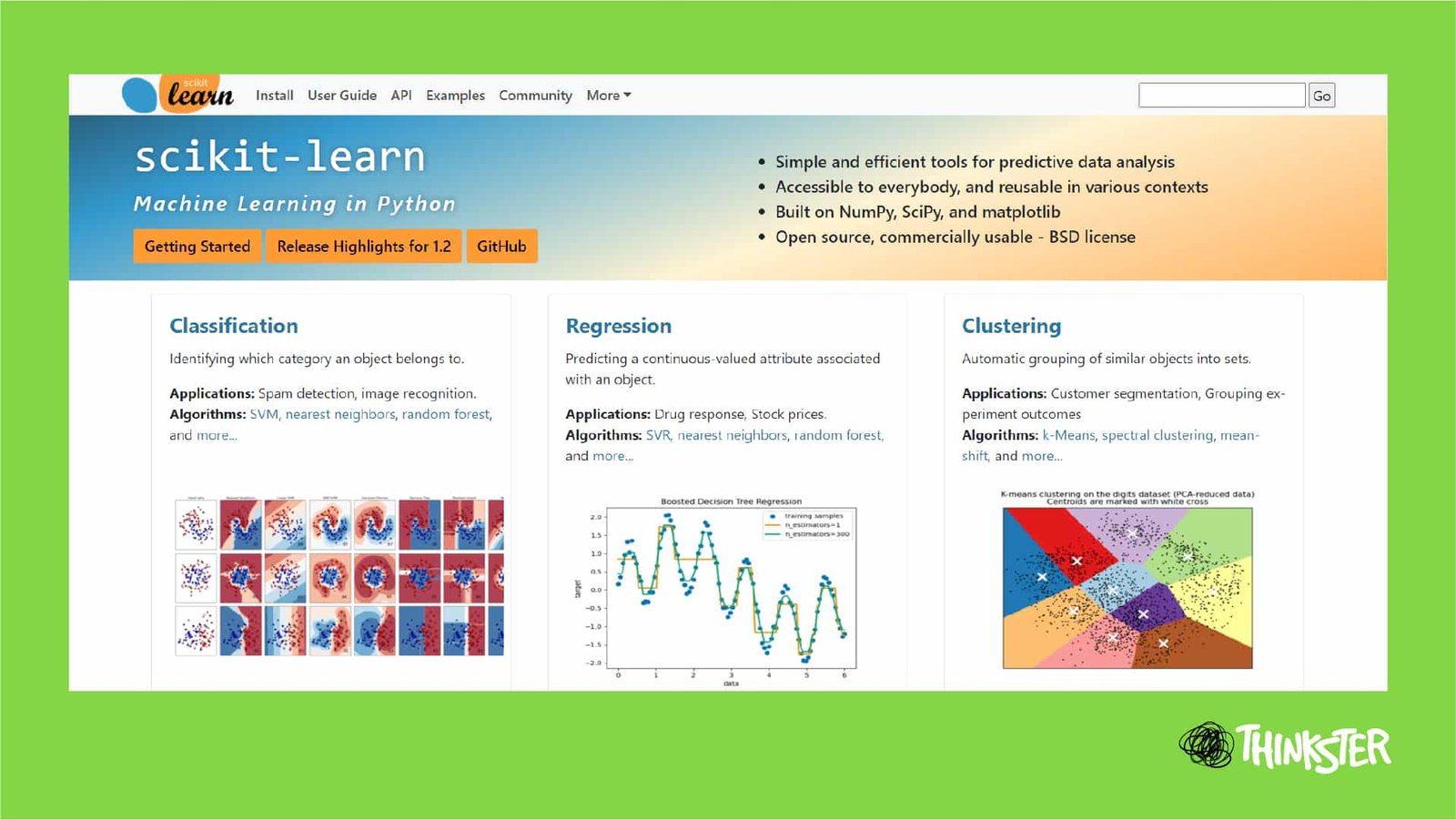
With its selection of supervised and unsupervised learning algorithms, which include regression, clustering, dimensionality reduction, and classification, Scikit-Learn is a well-known open-source machine-learning toolkit for Python. Additionally, it has tools for initial processing, data visualization, and model selection.
Scikit-Learn has several advantages, including simplicity of use, scalability, and adaptability. It makes switching among multiple algorithms simple by offering a standard API across all of them. Additionally, it provides top-notch community assistance and documentation.
Scikit-Learn’s advantages include quicker machine learning model prototyping and development, decreased creation time and cost, and enhanced accuracy and performance. It is commonly employed in business and academics and is appropriate for both inexperienced and seasoned data scientists.
PyTorch
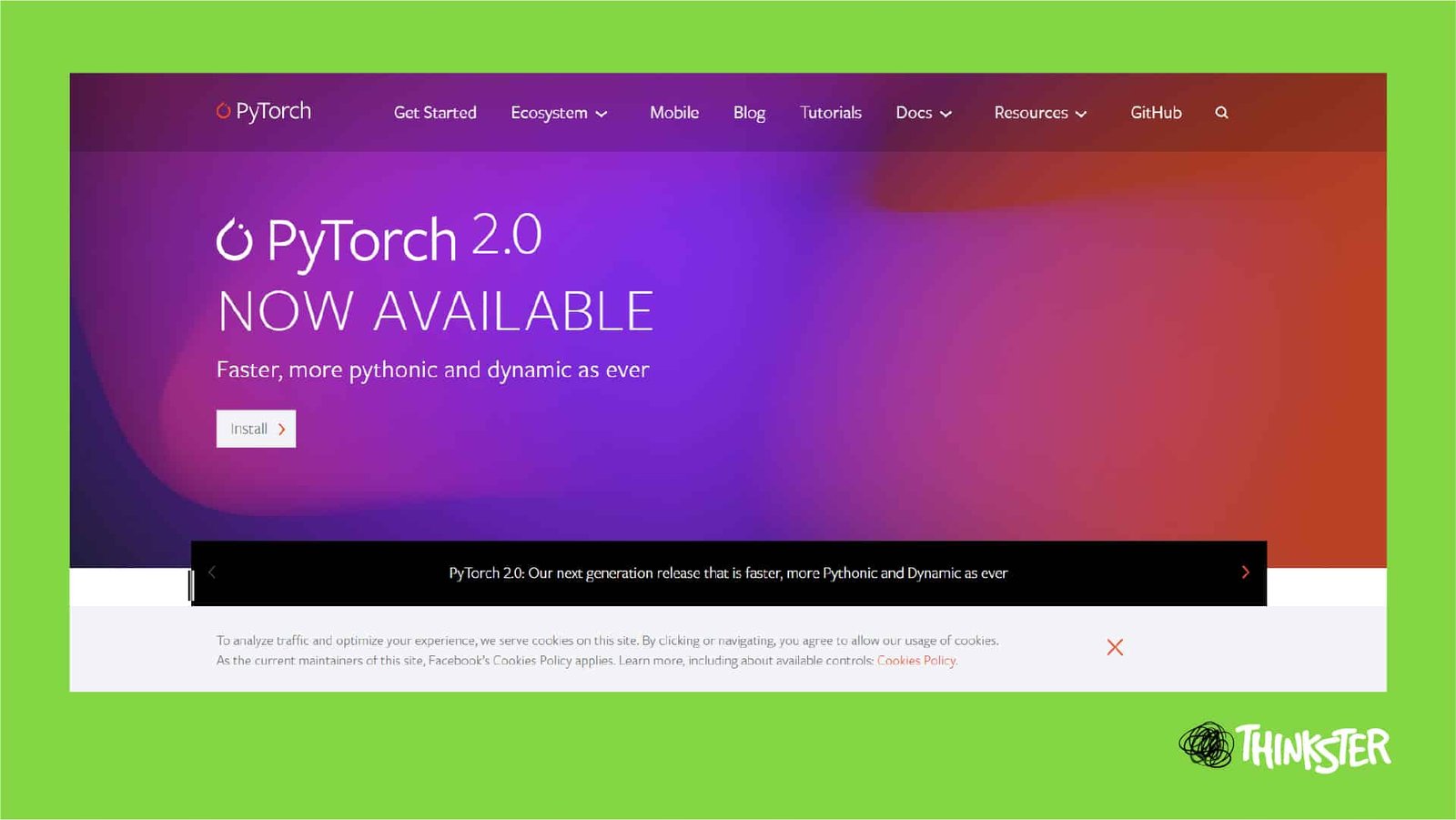
An open-source machine learning library called PyTorch is based on the Torch library. It is made to offer a quick and adaptable method for creating models using deep learning. The attributes of PyTorch feature a dynamic processing graph, a significant number of pre-built modules, assistance with multiple GPUs, and a vibrant developer community.
The simplicity of usage of PyTorch enables programmers to easily prototype and test out various models. Furthermore, it allows for quicker model training and improved memory usage thanks to its lively estimation graph. Users can scale the models they build to address bigger data sets and more difficult obstacles thanks to PyTorch’s support for many GPUs. All things considered, PyTorch is an effective tool for building and using deep learning systems.
Keras
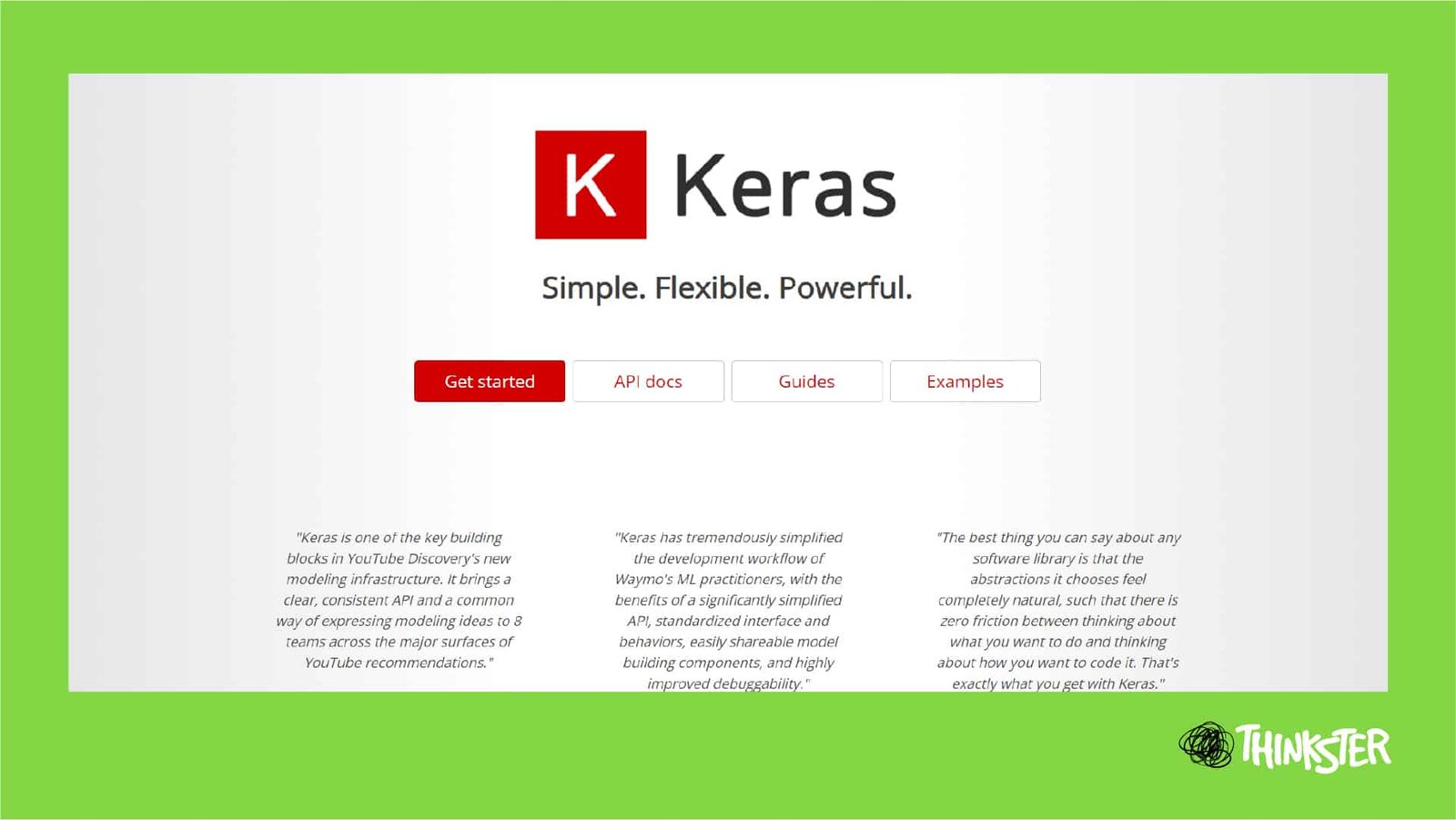
Python-based Keras is an open-source neural network library. It is intended to make deep neural network experimentation quick, and it offers a simple and user-friendly interface that makes building complicated models easier. Both recurrent as well as convolutional neural networks are supported by Keras, which is also compatible with several backends, such as TensorFlow, Microsoft Cognitive Toolkit, and Theano.
The modular and adaptable design of Keras, together with support for a variety of data entry and output types, are some of its standout characteristics. Large-scale machine learning applications are well suited for Keras because it additionally allows for GPU and distributed training.
Keras’ flexibility with a variety of backends and hardware platforms allows for more rapid creation as well as prototyping of deep learning models as well as greater usability and better productivity. The software developer and user communities for Keras are huge and vibrant, and they offer comprehensive documentation, instructional materials, and other resources to individuals of all skill ranges.
Pandas
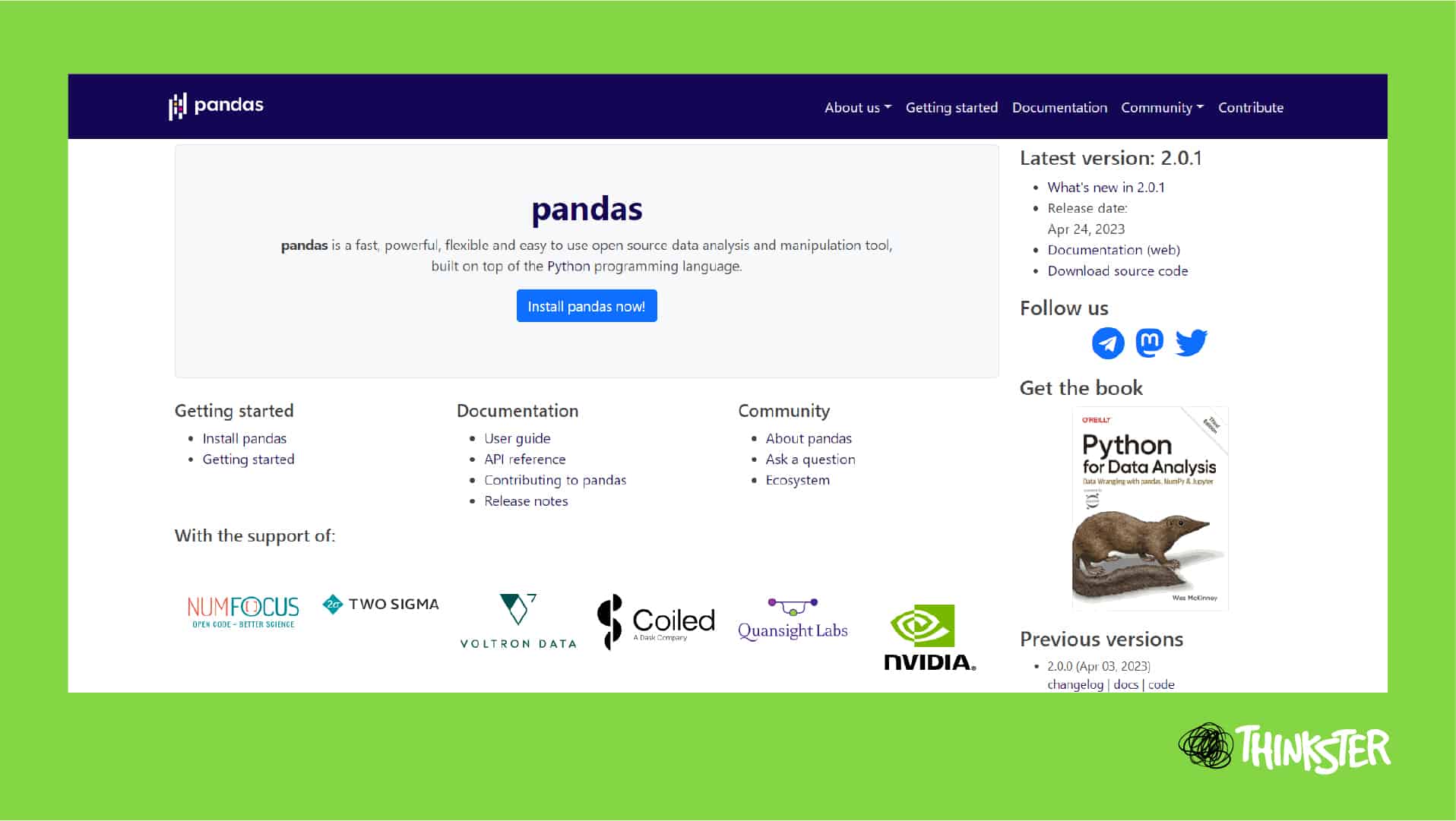
A Python programming language package for data manipulation and analysis is called Pandas. It offers a quick, adaptable, and descriptive approach to working with time series and other types of structured data. Data cleaning, data manipulation, data analysis, and data visualization are some of the primary aspects of Pandas.
The advantages of utilizing Pandas include its simplicity, effectiveness, and adaptability to a wide range of data formats. Large datasets can be easily manipulated and analyzed, and they can manage incomplete information and time series data. Pandas is a potent tool for analyzing information and visualization since it works nicely alongside additional Python libraries and programs like NumPy and Matplotlib.
NumPy
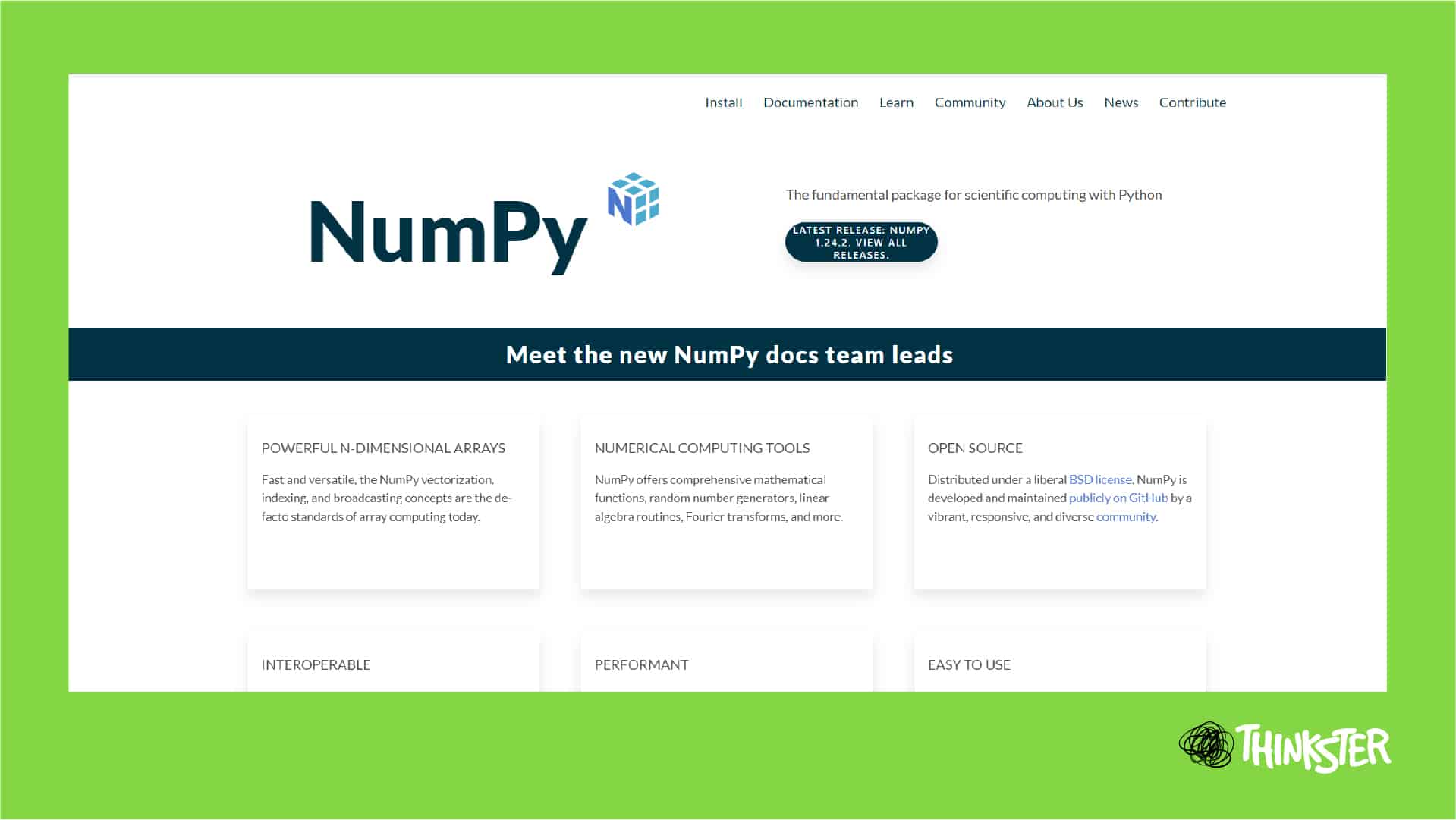
A Python library with the name “Numerical Python” It offers assistance for big multivariate arrays and matrices and efficient numerical calculations. Its capacity to execute both logical and mathematical operations on arrays of data, backing for Fourier analysis, linear algebraic operations, and random number generation are some of its standout characteristics.
The advantages of adopting NumPy for scientific computing include its capability to handle huge datasets effectively, its rapid execution velocity, and its interoperability with other Python libraries. NumPy is perfect for applications involving the analysis of information and machine learning because it enables quick calculation of mathematical operations. Furthermore, it offers a straightforward interface for handling complicated mathematical operations, which makes it a well-liked option among researchers and data scientists.
OpenCV

OpenCV (Open Source Computer Vision Library) is a software library for computer vision and machine learning. To help programmers create programs that can analyze visual data, the library offers a variety of methods and operations. Processing of images and videos, object detection and recognition, along with machine learning are all traits associated with OpenCV.
One of OpenCV’s positive aspects is that it is open-source and free to use, making it available to everyone. Its huge and vibrant developer community makes it simple to acquire help and encouragement. It is also highly optimized and compatible with a variety of operating systems, which include Windows, macOS, Linux, and other portable devices. For academics, developers, and enthusiasts interested in computer vision, OpenCV’s capabilities and advantages make it a useful tool.
Apache Spark
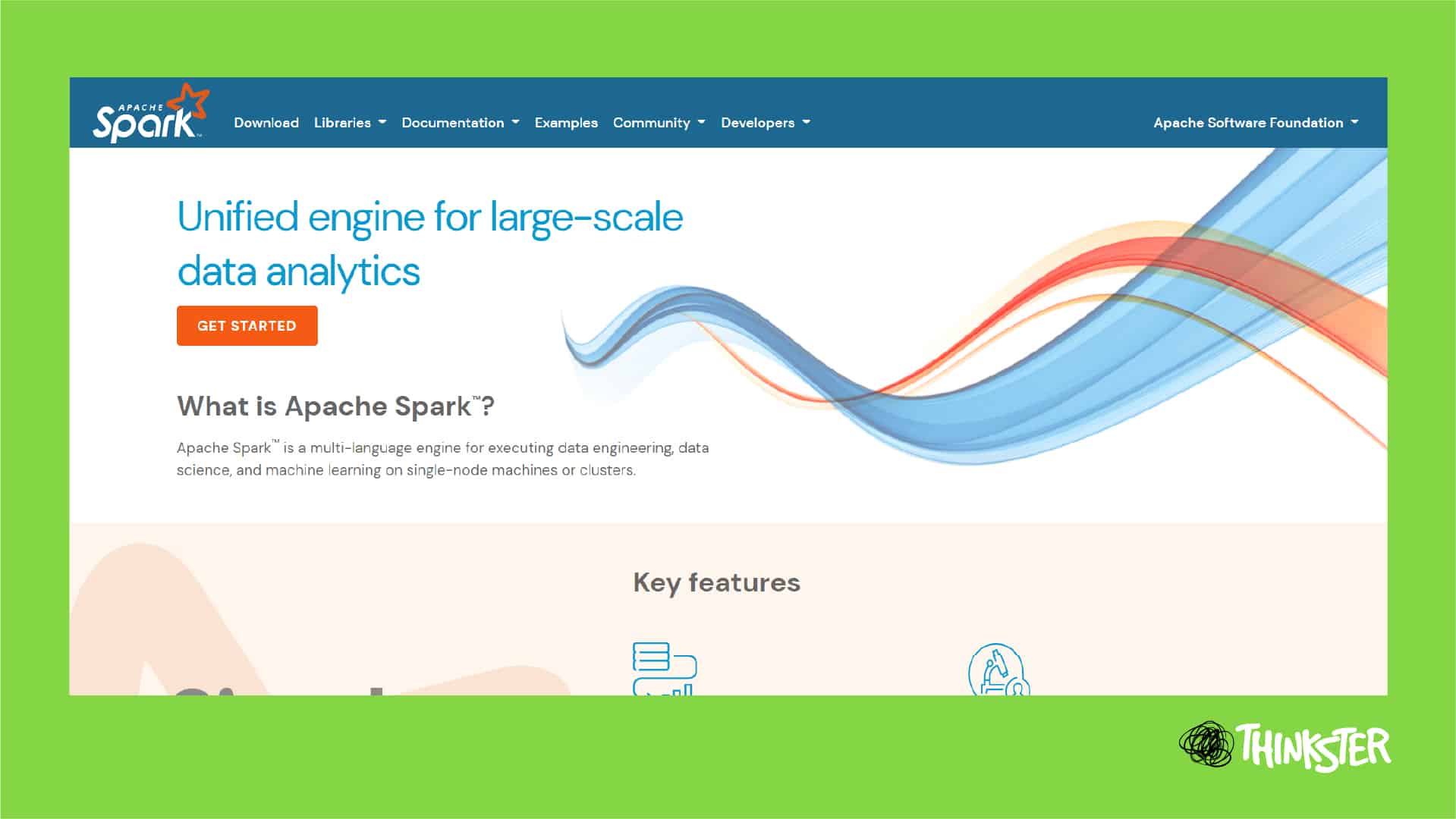
A single solution for big data thinking about machine learning, including graph processing, is offered by Apache Spark, an open-source collaborative computing system. It has characteristics like processing in real-time, acceptance of errors, and storage of in-memory data processing.
Apache Spark’s speed, which can handle data as much as 100 times quicker than Hadoop, represents one of its primary selling points. It additionally accommodates a variety of data sources and computer languages, making system integration simple. Additionally, Apache Spark offers a scalable framework for handling sizable datasets, enabling companies to use big data to acquire insights and make informed decisions. All things considered, Apache Spark is an effective tool for handling massive volumes of information as well as creating complex data pipelines.
Hugging Face Transformers
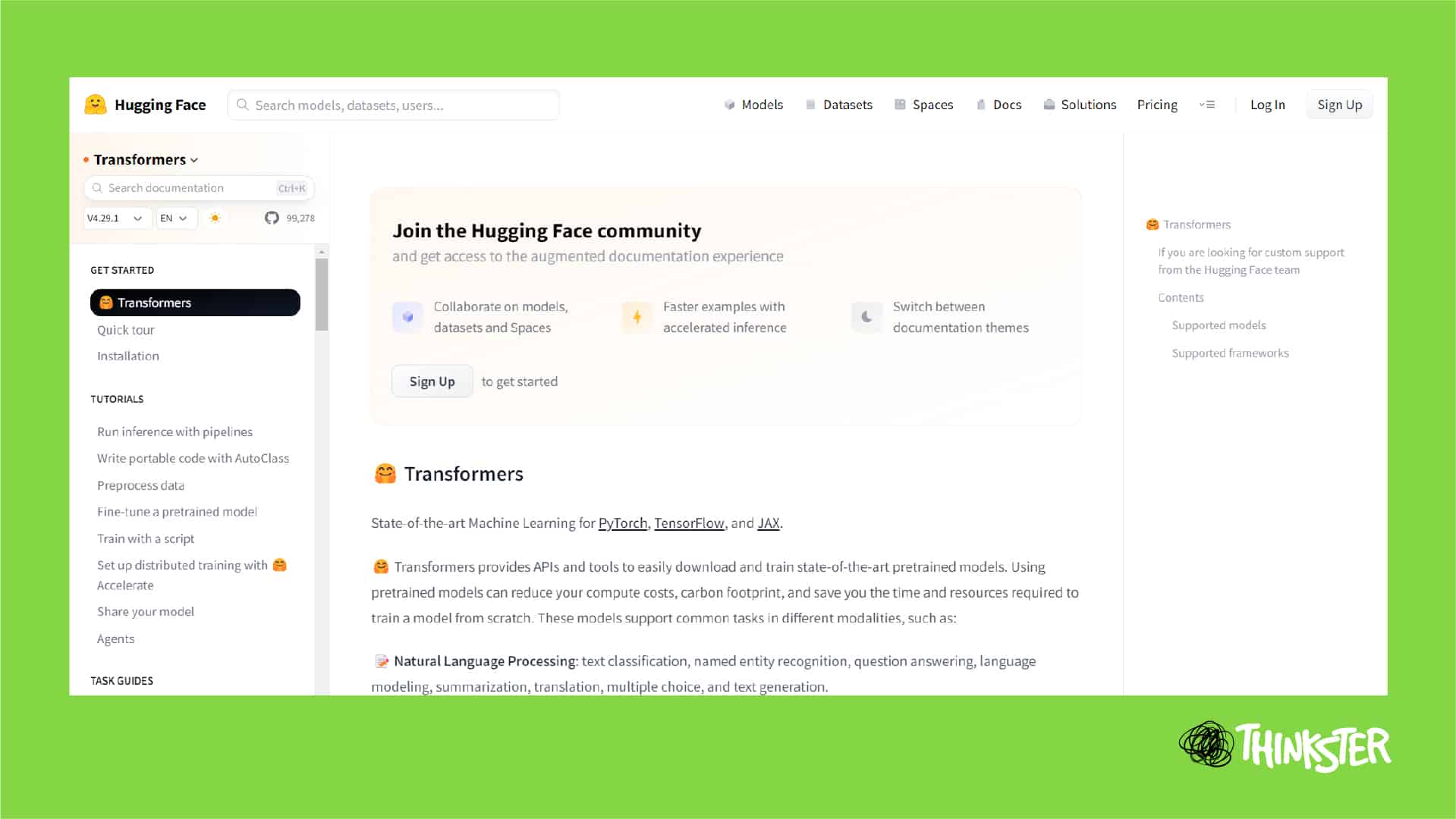
The open-source library Hugging Face Transformers offers cutting-edge models of natural language processing for a variety of applications, including the classification of texts, question answering, and translation from one language to another. Pre-trained models for multiple languages and jobs are among its capabilities, along with the ability to support fine-tuning and personalized training and integration with well-liked deep learning frameworks like PyTorch and TensorFlow.
Hugging Face Transformers have the advantage of being quick and simple to integrate advanced NLP models, which cuts down on the time and effort needed for development. Even with little training data, its pre-trained models perform well and may be adjusted for certain use cases. The library is also regularly updated with fresh models and features, enabling NLP applications to advance over time.
Jupyter Notebook
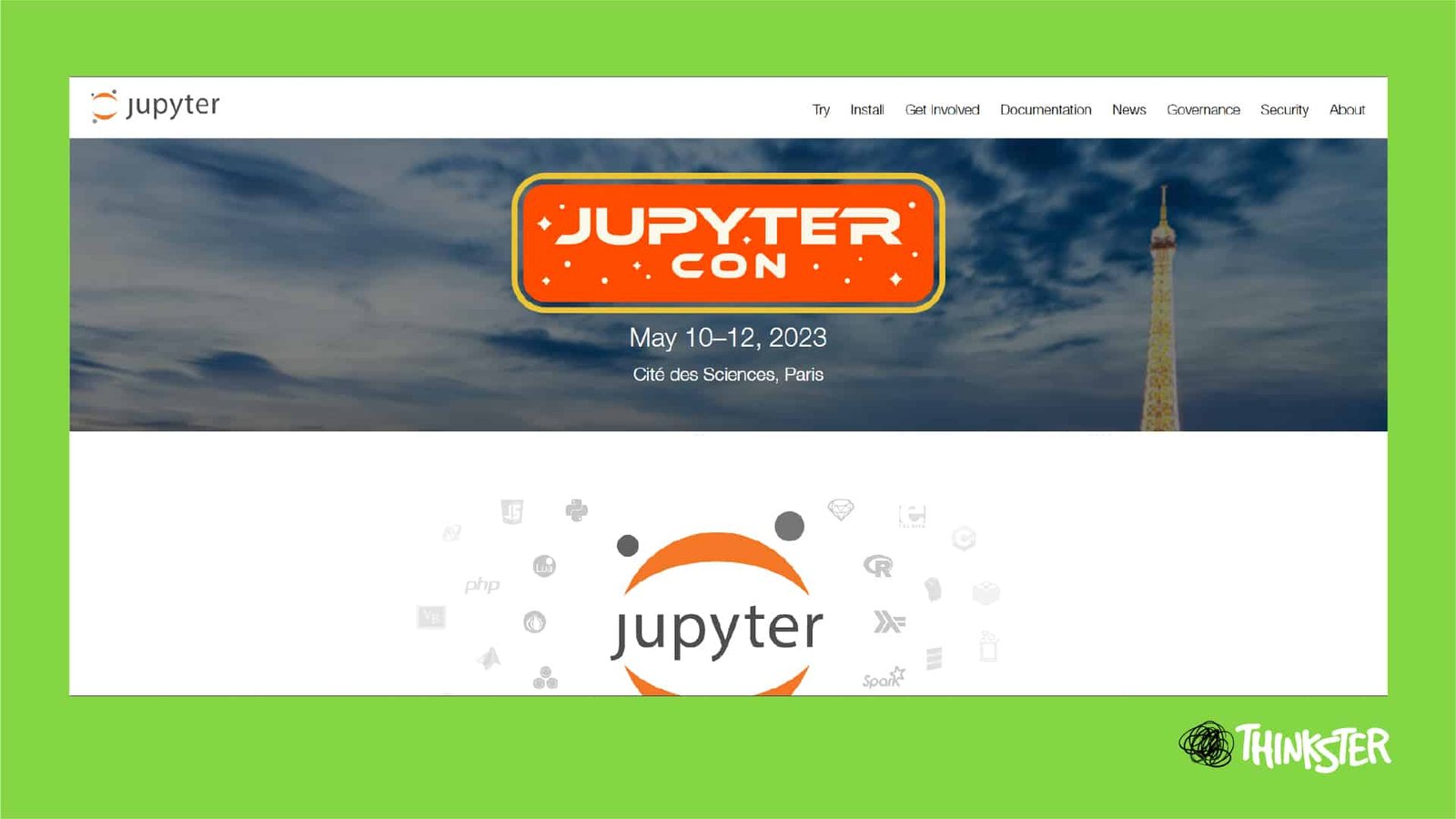
An open-source, online communication interactive computing environment called Jupyter Notebook enables users to develop and share notebooks with real-time code, equations, visuals, and text. Python, R, and Julia are among the more than 40 programming languages that it supports.
Real-time execution of codes, interactive data visualization, and simple user collaboration are some of Jupyter Notebook’s standout features. It makes for a superior tool for analyzing data, machine learning, & scientific research since it allows users to develop, run, and debug code in a user-friendly environment.
Jupyter Notebook’s adaptability, portability, and simplicity of use are its advantages. It offers a practical method of consolidating code, data, & documentation in a single place, making it simple to share and replicate study findings. Individuals of Jupyter Notebook can explore and share data in novel and intriguing ways by creating dynamic and interactive pages. Jupyter Notebook is an effective tool that enables users to carry out data analysis, research, as well as a trial more simply and productively.
Table Comparing The Top Free AI tools:
Tool | Features | Ease of Use | Learning Curve | Limitations |
Jupyter Notebook | Interactive environment for data analysis and visualization, supports multiple programming languages | Easy to use for beginners | Low | Limited scalability for large datasets |
Hugging Face Transformers | Pre-trained models for natural language processing tasks, easy to fine-tune | User-friendly interface | Low | Limited to NLP tasks |
Apache Spark | Distributed computing framework for large-scale data processing, supports multiple programming languages | Steep learning curve for beginners | High | Limited deep learning capabilities |
OpenCV | Computer vision library, support for multiple programming languages | Steep learning curve for beginners | High | Limited deep learning capabilities |
NumPy | Library for numerical computing in Python, supports multi-dimensional arrays | Easy to use for beginners | Low | Limited to numerical computations |
Pandas | Library for data manipulation and analysis in Python, supports tabular data structures | Easy to use for beginners | Low | Limited to tabular data |
Keras | User-friendly API, customizable | Easy to use for beginners | Low | Limited customization options |
PyTorch | Dynamic computational graphs, intuitive API | Easy to use for beginners | Low | Limited scalability for large datasets |
Scikit-Learn | Wide range of machine learning algorithms, easy to integrate with other Python libraries | Easy to use for beginners | Low | Limited deep learning capabilities |
TensorFlow | Wide range of machine learning algorithms, customizable | Steep learning curve for beginners | High | Requires significant programming knowledge |
The ideal tool to use will depend on the task at hand, your level of expertise, and the computational resources that are accessible. Users can compare the features, usability, learning curve, and constraints of each tool to arrive at educated judgments.
Final Words
An open-source, web-based collaborative computing environment called Jupyter Notebook is used for scientific research, machine learning, and data analysis. Hugging Face Transformers is an application that offers models that have already been trained for tasks involving natural language processing. Big data processing is done using Apache Spark, an open-source distributed computing technology.
A computer vision library called OpenCV is used to process images and videos. Python libraries for mathematical computation and data analysis include NumPy and Pandas. Popular deep-learning frameworks include Keras and PyTorch, and a machine-learning package called Scikit-Learn is used for classification, regression, and clustering. A well-liked machine learning framework called TensorFlow is utilized for many different purposes, such as deep learning as well as reinforcement learning.
In 2023, using AI tools will be essential for remaining competitive in a range of sectors, including technology, banking, and healthcare. Businesses may automate repetitive jobs, streamline processes, and improve decision-making with the use of AI solutions. Additionally, they can assist scientists and researchers with conducting tests, creating prediction models, and analyzing vast amounts of data.
The top free AI tools in 2023, in conclusion, provide a variety of features and functionalities that can aid users in completing a range of tasks, from data analysis as well as visualization to machine learning and deep learning. For organizations, researchers, and individuals who wish to remain competitive and inventive in their respective fields, these tools are crucial. The relevance of employing AI tools will continue to grow as AI proceeds to develop and transform numerous sectors. Check out more articles like this – 10 Top Paid AI Tools in 2023 for Digital Marketing




